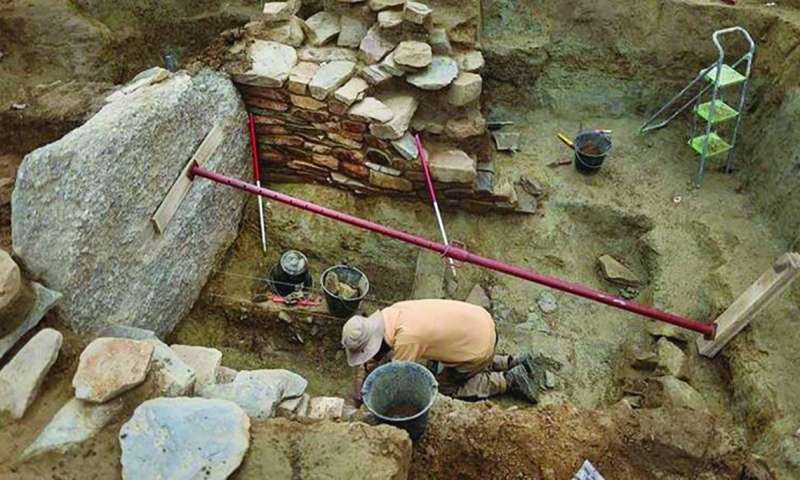17/10/2023
17/10/2023

KUWAIT CITY, Oct 17: Archaeologists have initiated fresh excavations in western France to unravel the mysteries of the Saint-Bellec slab, a 4,000-year-old carved stone believed to be Europe's oldest map of a region.
At the archaeological site of Saint-Bellec in Louannes within the Brittany mountains, Yvan Payet, an archaeologist from the University of Western Brittany, and his team are working to "better understand the context of the discovery, gather dating evidence," and "verify the existence of any remaining fragments."
The slab, discovered in 1900 by Paul de Chatelier, had been forgotten for over a century until recent efforts to decipher it were reignited. Yvan Payet and researcher Clement Nicolas had previously made progress in decrypting the tablet, starting in 2014 when they found it stored in one of the basements of the National Museum of Antiquities in Saint-Germain-Annelet, near Paris, reports Al-Rai daily.
Early on, the researchers identified engraved symbols that appeared to convey meaning. They further validated their initial observations by conducting a three-dimensional scan of the 2.20-meter by 1.53-meter slab and comparing it with modern maps using statistical methods. Remarkably, they found an 80% similarity between the slab and the current terrain, confirming the accuracy of the ancient map.
One of the most enigmatic symbols on the slab comprises small circular cavities, ranging from one to ten millimeters in diameter. These are believed to represent dwellings or geological formations.
The researchers emphasized the importance of conducting a comprehensive survey of the area to align the map's locations with the existing landscape. They estimated this task would span around 15 years and likened the map to a "treasure map."
By combining aerial and ground photography, the researchers intend to provide conclusive evidence of the topographical nature of the inscriptions and achieve a more precise dating of the map by analyzing associated archaeological sites. Ultimately, dating these sites will shed light on the inscriptions' age and historical context.


